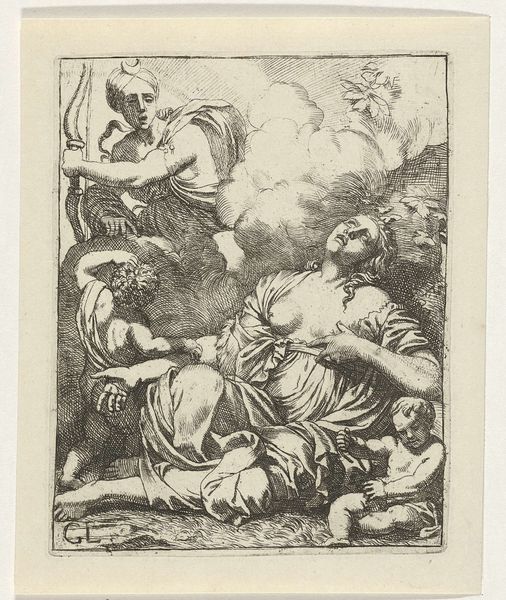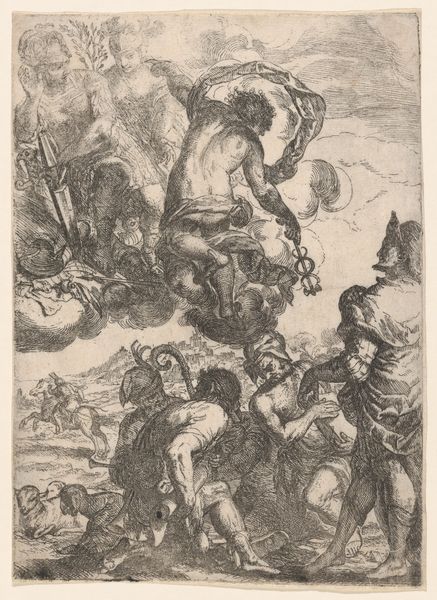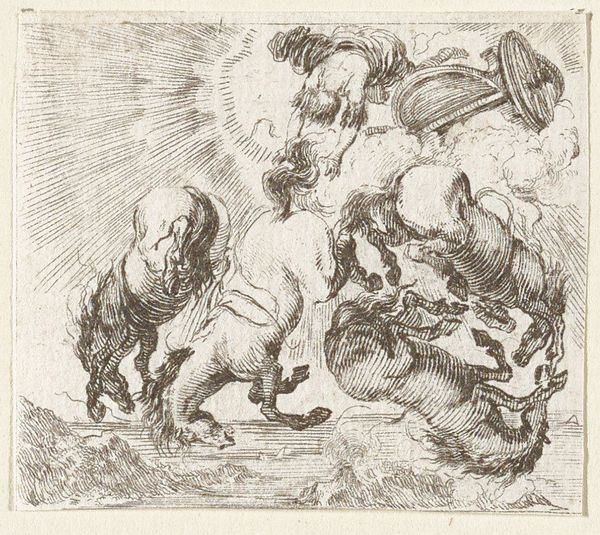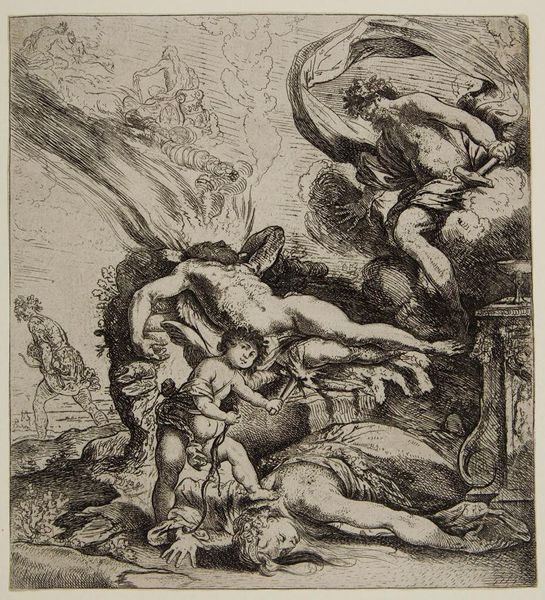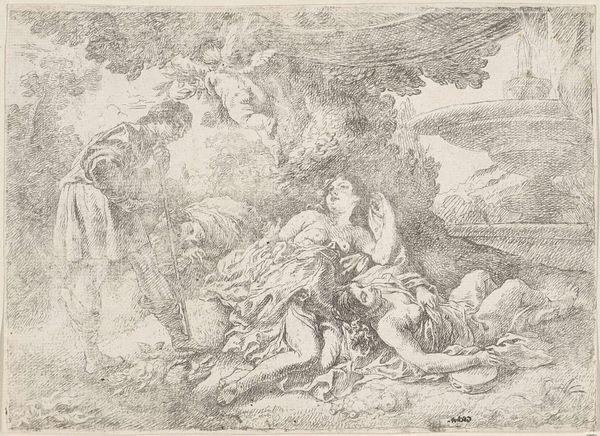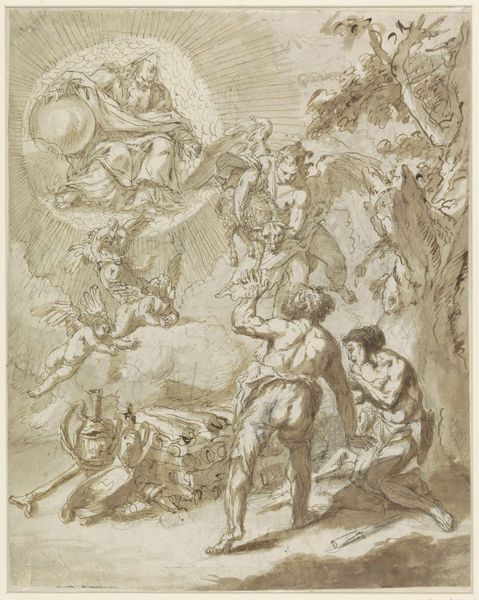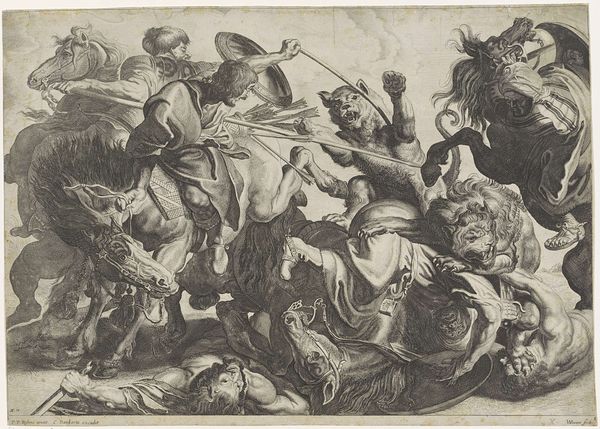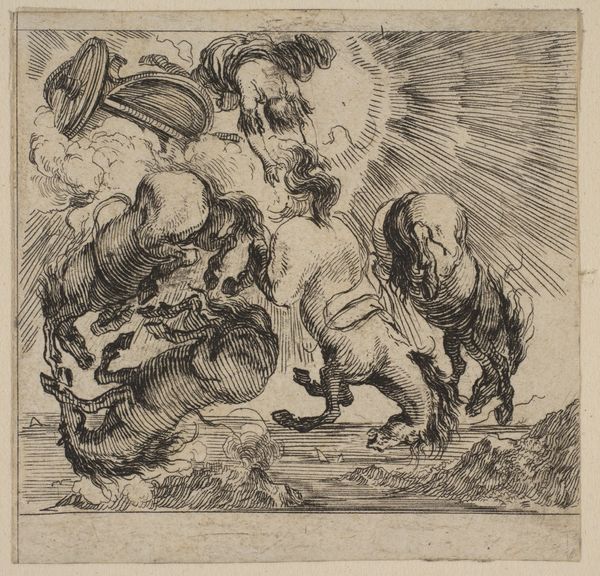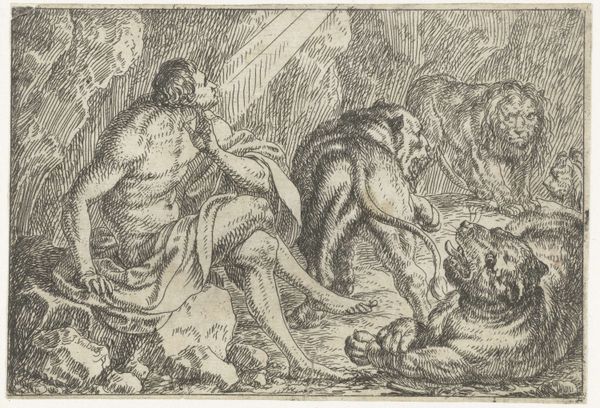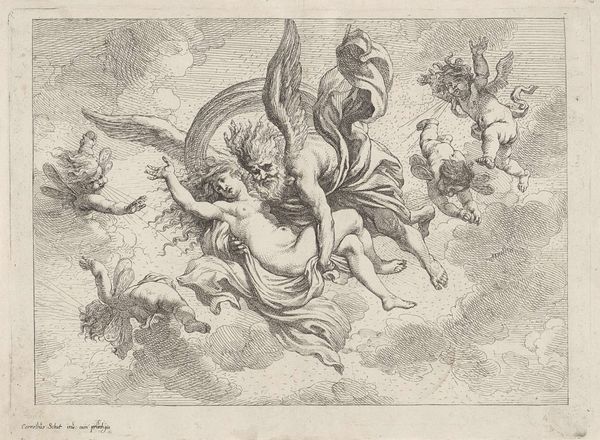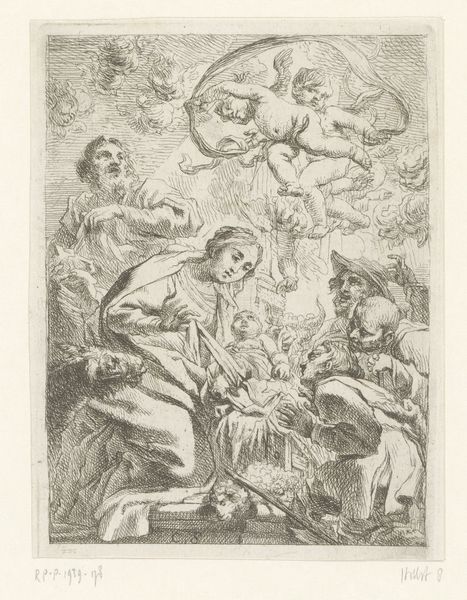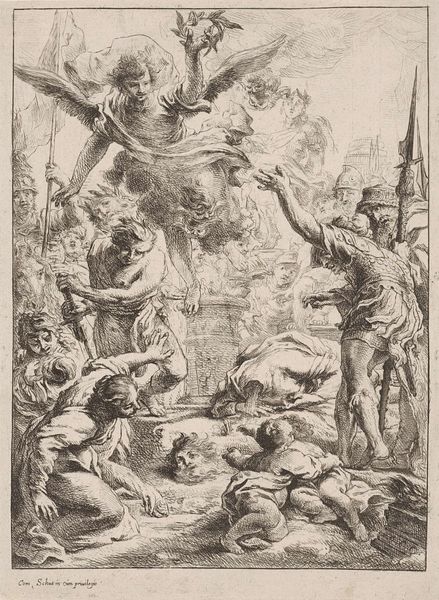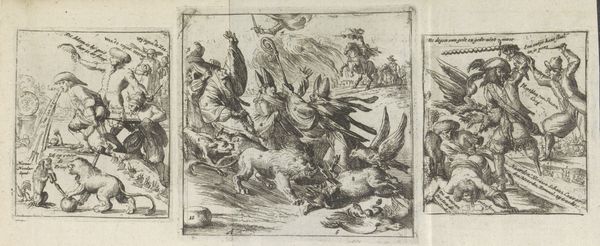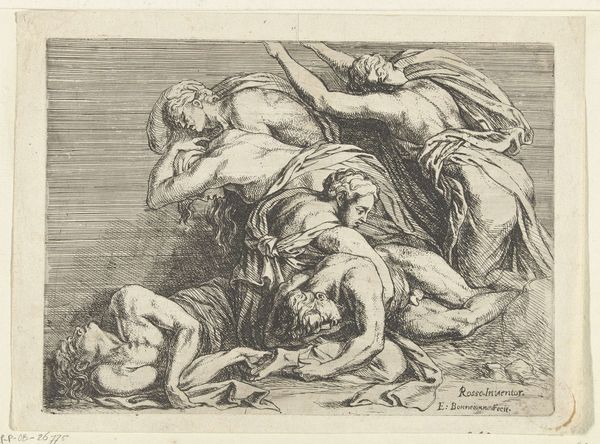
print, etching
#
narrative-art
#
baroque
# print
#
etching
#
figuration
#
history-painting
Dimensions: height 137 mm, width 142 mm
Copyright: Rijks Museum: Open Domain
Curator: Here we have "The Conversion of Paul," an etching created by Cornelis Schut sometime between 1618 and 1655, currently held in the Rijksmuseum collection. What's your first impression? Editor: A jumble of figures, really—human and animal—all seemingly caught in the same chaotic instant. There’s a powerful sense of disruption. Curator: Absolutely. Schut depicts a pivotal narrative—Saul's transformation on the road to Damascus, where a blinding light and divine voice lead him to embrace Christianity. It's potent stuff and this portrayal certainly brings across his inner turmoil, but I find the context in which Schut creates it also potent. Think of religious tensions that prevailed in the early modern period and Schut's ability to engage with religious iconography. Editor: Indeed. And that beam of light cutting through the composition—the hand of God, quite literally. But observe how the figures react: some are thrown from their mounts, shields scatter, faces twist in agony. This imagery echoes earlier depictions, especially by Italian Renaissance artists; yet, there’s also a raw dynamism here. The fallen horse, for instance—its legs splayed—isn’t merely a discarded prop but seems to convey Paul's own feeling of powerlessness. Curator: The figures here represent not only Paul's conversion experience, but how transformative the role of religion was in shaping the artist’s contemporary political views. It also reveals that individual subjectivity is just as susceptible to powerful institutions. His conversion suggests a broader societal shift of power and belief. Editor: Precisely, and that reminds me of the enduring power of certain images and symbolic compositions—a potent beam of light representing divine intervention has, and will continue to carry psychological weight for years. Curator: That enduring theme also invites us to question power dynamics inherent within conversion narratives. I am glad that this etching allows to think about broader themes. Editor: Me too. This raw portrayal, despite its traditional iconography, makes me consider what a deep psychological transformation means when faced with societal pressures.
Comments
No comments
Be the first to comment and join the conversation on the ultimate creative platform.
